Table of contents
The raw edible corn cob (or corn cob) is sweet corn ( Zea mays or Zea mays saccharata 21,22). It has many uses in the kitchen, has health-promoting properties and plays a major role in the ecological niche ( organic).
Using corn on the cob in the kitchen:
Most people know corn on the cob as a delicious grilled vegetable. But you can also eat corn on the cob boiled, baked in the oven or fried in a pan. You can marinate the cobs for more flavor. Hot spices such as chili powder, pepper, paprika powder, but also garlic, parsley, basil and various fresh herb mixtures go particularly well with baked potatoes with quark (vegan), tomatoes, pulses (e.g. lentils or beans or in the vegan quinoa bowl with chickpeas) and many other vegetables (e.g. vegan cauliflower corn chowder).
Sweet corn cobs end up on our plates. Their kernels are sweet because they are harvested at the milk stage, before the sugar is converted into starch. Baby corn cobs (miniature corn, corn cobs) are also sweet corn. They are around 10 cm long, are eaten whole and are often used in Asian cuisine in wok or pan-fried dishes.
Cooking raw corn: How long does a corn cob need to cook? Peeled corn cobs (corn without the shell/husk) need between 20 and 25 minutes in boiling salted water. The information on baking times at around 200 °C is similar.
Can you eat corn raw? or Can you eat raw corn? Yes, you can eat corn on the cob raw - if it is sweet corn. Corn from the field is usually fodder corn (grain corn). Although such cobs look tempting, they are not tasty. 23 Sweet corn on the cob, on the other hand, tastes particularly delicious raw, e.g. as a snack or in salads. Fresh corn cobs can also be marinated in white wine vinegar or white balsamic vinegar, which increases their shelf life.
The corn kernels of the grain corn can be ground into corn semolina and whole grain corn flour. This can be used to make porridge, corn mash or a thickener for soups and sauces as well as corn tortillas.
Vegan recipe for grilled vegetable skewers with corn on the cob:
Ingredients (for 6 people): 1 red pepper, 1 yellow pepper, 1 green pepper, 1 zucchini, 6 mushrooms, 1 corn on the cob (raw, organic), 1 large red onion, some rapeseed oil, fresh rosemary, fresh thyme, oregano, salt,pepper, chili flakes.
Preparation: Soak the wooden skewers in water. Wash the vegetables, cut them into equal-sized pieces (cut the corn cobs into thick slices) and pierce the skewers. Use a piece of red onion at the beginning and end. Fill each skewer with one mushroom and one slice of corn, and the rest with pepper, zucchini and onion. For the marinade, peel the garlic and chop finely together with the herbs. Mix the herbs together with salt, pepper and rapeseed oil in a bowl and drizzle over the vegetable skewers. As soon as the grill is preheated, place the skewers on top and grill on all sides for 5 minutes until the vegetables are cooked through and take on color. Serve the finished vegan vegetable skewers warm.
Preparation of corn silk tea:
Corn silk (corn stigma) is the name given to the ends or hairs of the corn plant. You can either harvest them fresh from the cob or buy them cut and ground. To make fresh corn silk tea, boil 3 tablespoons of dried corn silk in a liter of water and let it steep for 7 minutes. The tea has a slightly sweet taste.
Vegan recipes with corn on the cob can be found under the note: " Recipes that have the most of this ingredient ".
| Not only vegans or vegetarians should read this: Vegans often eat unhealthily. Avoidable nutritional errors. |
Shopping - where to buy corn on the cob?
Fresh corn on the cob (raw) in organic quality can be found during the season (in Central Europe: from July to October) at farmers' markets or in health food stores, organic shops, organic supermarkets (such as Denn's Biomarkt, Alnatura) or online. Prefer regional organic vegetables.
During the corn season, you can also buy fresh corn cobs in raw quality (e.g. as: sweet corn, raw) in supermarkets such as Migros, Rewe, Edeka, Aldi, Coop, Lidl, Spar, Volg, Denner, Hofer etc.; preservedsweet corn kernels are also available. Pre-cooked and vacuum-packed corn cobs can be found at Coop, Migros, Spar, Aldi, Rewe, Lidl or Edeka. Pickled corn cobs are available at Migros, Coop, Volg, Interspar, Aldi, Rewe, Edeka and Hofer.
Storing sweet corn (cobs):
Fresh, raw corn cobs can be stored in the refrigerator for 2-4 days. They should be consumed quickly. The older the cob, the more of the sugar it contains turns into starch and the corn begins to taste mealy. A corn cob that has been stored incorrectly can taste sour and should not be eaten.
Pre-cooked and sealed corn cobs have a longer shelf life. They can be stored for several months. Corn cobs that you pickled yourself can be kept in the fridge for up to 3 months.
Corn cob ingredients - nutritional values - calories:
The nutritional values of corn cobs are as follows: 100 g of corn cobs contain 56 g of carbohydrates and have an energy content of 274 kcal. They contain 5.5 g of fiber and 3.6 g of fat. The 7.1 g of protein they contain can be compared with the content of long grain rice and sprouted wheat. Spelt is slightly richer in protein (14.9 g). 2
Corn cobs contain 0.87 g of leucine per 100g, which is 36% of the daily requirement. Semolina (organic) contains a similar amount. Unpeeled hemp seeds (raw) contain significantly more leucine at 2.2 g per 100g. 2
The amount of threonine in 100 g of corn cobs accounts for around 29% of the daily requirement. The content of 0.27 g/100g can be compared with wholegrain rice, medium-grain rice and rye grains. Wheat germ has a high threonine content (1 g/100g). 2
Do corn cobs contain vitamins? The 0.62 mg of vitamin B6 (pyridoxine) contained in 100 g covers 33% of the daily human requirement. Raw linseed has a comparable amount (0.74 mg/100g). The content is significantly higher in wheat bran (1.3 mg/100g). 2
The complete nutritional values of corn on the cob, the coverage of the daily requirement and comparison values with other ingredients can be found in our nutrient tables. In the article Nutrients explained you will get a detailed insight into the topic.
Health aspects - effects:
Are corn cobs healthy? Corn cobs are particularly characterized by antioxidants, which act as radical scavengers and can reduce oxidative stress. 21 Red, purple and blue corn contain anthocyanins, which are responsible for the color of the corn kernels and also act as antioxidants. 4 These can reduce the risk of arteriosclerosis, cardiovascular disease, arthritis and cancer.
Active ingredients such as saponins, flavones (yellow plant pigments), tannins, potassium, bitter substances, resins and essential oil can also be found. The yellow corn cobs also contain the carotenoids or plant pigments zeaxanthin, lutein and beta-carotene. The first two protect the eyes from high-energy wavelengths of blue light, 3 beta-carotene can be converted into vitamin A by the body.
Corn is well tolerated. Eating the yellow kernels is recommended for intestinal diseases (e.g. irritable bowel syndrome, chronic colitis, celiac disease), as the kernels have a protective effect on the intestinal mucosa and do not contain gluten. In the case of chronic kidney diseases, corn kernels can provide relief with their slightly diuretic effect. Eating corn is also recommended for hyperthyroidism, as it slightly inhibits the thyroid and metabolism. Corn can also be used to gain weight if you are underweight. 6
Corn silk contains a lot of oils and phytic acid. It is believed to have a variety of potentially health-promoting properties due to its high content of phytochemicals, mainly flavonoids. Corn silk tea is said to help with inflammation and urinary tract problems, as well as reducing swelling and fatigue. 18
Dangers - Intolerances - Side effects:
Corn can cause symptoms in the form of a corn allergy. These include headaches, nausea, diarrhea, reddening of the skin, swelling of the mucous membranes, breathing difficulties or circulatory collapse. People with a corn allergy should therefore avoid eating products containing corn.
A cross allergy to grasses such as wheat, rye, ryegrass and oats can also cause allergic reactions. In a cross allergy, the immune system reacts oversensitively to the same or similar allergens in different foods. 7
Eating sweet corn raw: Raw corn has a glycemic index of 54. If the corn on the cob is cooked, this increases to 70. Popcorn even reaches 85. Foods with a high glycemic index cause blood sugar levels to rise quickly. 8 This can lead to health problems in the long term, such as insulin resistance, weight gain and diabetes. People who suffer from diabetes should only consume corn occasionally in small amounts.
Since corn lacks essential amino acids, the protein it contains is of unsatisfactory quality. A one-sided diet focused on corn could lead to the vitamin deficiency disease pellagra. To compensate for this, pulses can be combined with the corn cobs. 9
Corn kernels contain phytic acid, which prevents the absorption of nutrients such as iron and zinc. 5 For people with a balanced and healthy diet, phytic acid is hardly a problem, as long chewing and gastric juices activate the body's own phytases (a group of enzymes that break down phytic acid). The phytic acid content can be reduced by fermenting or sprouting before consumption.
You should not drink more than 3-4 cups of corn silk tea per day, as the tea will otherwise remove too much fluid from the body and negate the positive effects. Manufacturers do not recommend corn silk tea for people with dry skin or during menopause. Pregnant women are advised to consult a doctor before taking corn silk tea, as there is no scientific evidence to support this and it is believed to have a possible blood pressure-lowering effect. 18,20
Folk medicine - natural medicine:
The corn stigmas (long corn hairs or corn beards) that the female flower develops for pollination can be used in phytotherapy (drug name: Maydis stigmata). They have a diuretic and water-expressive effect, are analgesic and anti-inflammatory. They are used, among other things, for bladder grit (urinary crystals in the bladder or urine). 10 However, there are no approved preparations containing this medicinal herb on the market. 1
Occurrence - Origin - Ecology:
The maize plant ( Zea mays L.) is a grain that originally comes from South America and belongs to the grass family (Poaceae). After discovering America , Christopher Columbus brought maize to Spain, from where it spread across Europe. Today's maize is the most extreme case of a plant created by man and adapted to his needs, and the grain with one of the highest yield potentials. 11
There are over 50,000 different types of corn in the world. In Central America alone, there are countless primitive forms. In East Asia, for example, waxy corn has developed, which consists largely of the starch amylopectin. Waxy corn has significantly stronger swelling and thickening properties than other types of corn, so it is mainly used to make soups and sauces (the cob is not edible).
A mutation in the 18th century resulted in sweet corn, which tastes significantly sweeter than grain corn. Today, its main cultivation areas are in the USA, Europe and Thailand.
Cultivation - Harvest:
Corn is an annual crop that grows up to 3 m tall. The corn cobs form after the corn stigmas are fertilized on the cob axes. A maximum of 2 corn cobs ripen per plant. The corn plants are sown in April to early May. Corn needs a lot of warmth and needs a lot of sunlight to thrive. The corn takes at least 140 days to ripen.
Sweet corn does not grow as tall as grain corn and the leaves are thinner. 17 It is also harvested earlier, 16 when the corn hairs turn brown and milky white juice comes out of the corn kernel when it is scratched (milky ripeness). If the harvest is too late, the sweet corn will eventually taste mealy.
How are corn cobs harvested? The corn cob (the fruit of the corn) is harvested mechanically from the end of July to October, 11 sometimes a little earlier in Germany, and even earlier in Morocco, Spain and France. 23 In the organic segment, harvesting is often done by hand.
Ecological aspects:
The demand for corn is high. Extreme monocultures, high pesticide use and the cultivation of controversial genetically modified corn are the result. 12 In organic farming, which avoids these methods, the challenges lie primarily in direct sowing without herbicides, mechanical weed removal, crow damage and the natural control of the European corn borer. 19
General information about sweet corn:
Corn cobs are a staple food in Central America and some African countries. In Europe and the USA, however, corn is increasingly used as animal feed or energy crop. The most commonly grown types of corn are sweet corn and grain corn. Sweet corn can be found as a variety (var. or convar.), subspecies (subspecies) or mutation 22 - scientists are divided on this. 24 In the kernels of sweet corn, the upper part of the endosperm stores sugar instead of starch and the lower part stores amylodextrin. 23
How is the corn cob constructed? The cob is in the middle, and the corn kernels are arranged on it in 14-18 rows. There are about 35-40 kernels per row.
How many corn kernels are there on a corn cob? A corn cob has between 400 and 600 corn kernels in total. 13 The weight of a corn cob is around 200 g. The kernels are surrounded by long husks (lizzies) that protect the corn from predators. At the end of the corn cob are the corn stigmas (corn hairs, corn beards), which the female flower develops for fertilization.
What is hulled corn? Corn is not considered a hulled grain. Only in the case of so-called hulled corn are the kernels not lying freely on the cob, but each individual kernel is covered by a husk. Hulled corn is the result of a mutation. Due to the great effort involved in obtaining the kernels, it is no longer of agricultural importance. 14
Alternative names:
In some regions, corncobs are also called Kukuruzkolben (Kukuruz cobs) or Turk's cobs. Corncobs in English are called corncobs, cobs of corn or corn on the cob. Sweet corn is known as sweet corn (sweetcorn or sweet-corn). When peeled, the corncob is called shucked corn (corn, shucked).
Incorrect spellings are: corn on the cob, corn on the cob, eating raw corn.
Keywords for use:
Sweet corn is used as an energy crop 16 and as animal feed, but less often as grain corn.
What is made of corn? Corn can be used as a plastic substitute to make compostable garbage bags, carrier bags, shipping bags, drinking cups, cutlery, drinks bottles and eating bowls. Disposable gloves, garbage cans and suture material (in the medical field) are also made from corn. Manufacturers are currently working on toys and clothing that can be made from corn. 15 We do not know whether this also applies to sweet corn.
Bibliography - 24 Sources
| 1. | Rafsanjany N, Sendker J, Lechtenberg M et al. Unkomplizierte Harnwegsinfektionen: Extrakte aus Maisgriffeln (Zea mays L.) wirken gegen uropathogene E. coli. Zeitschrift Für Phytotherapie. 2016; 37(01): 9-15. |
| 2. | USDA United States Department of Agriculture. |
| 3. | O’Hare TJ, Fanning KJ, Martin IF. Zeaxanthin biofortification of sweet-corn and factors affecting zeaxanthin accumulation and colour change. Arch Biochem Biophys. 2015;572:184–7. |
| 4. | Loarca-Piña G, Neri M, Figueroa J de D u. a. Chemical characterization, antioxidant and antimutagenic evaluations of pigmented corn. J Food Sci Technol. 2019;56(7):3177–84. |
| 5. | Adams CL, Hambidge M, Raboy V u. a. Zinc absorption from a low-phytic acid maize. Am J Clin Nutr. 2002;76(3):556–9. |
| 6. | Roger P. Heilkräfte der Natur: Ein Praxishandbuch. Zürich: Advent Verlag. 2006. |
| 7. | Allergiefreie-allergiker.de Maisallergie. |
| 8. | Diabetes-austria.com. Glykämischer Index. |
| 9. | Healthline.com Corn 101: Nutrition Facts and Health Benefits. |
| 10. | Pahlow M. Das grosse Buch der Heilpflanzen. Nikol Verlag. 2013. |
| 11. | Rehm S, Espig G. Die Kulturpflanzen der Tropen und Subtropen. Stuttgart: Verlag Eugen Ulmer. 1976. |
| 12. | Pini U. Das Bio-Food-Handbuch. Ullmann: Hamburg, Potsdam. 2014. |
| 13. | Public.pioneer.com Der maximal mögliche Kornertrag und Störungen in der Kolbenentwicklung. |
| 14. | Pflanzenforschung.de Spelzmais ist kein Vorfahre des heutigen Maises. |
| 15. | Planet-wissen.de Mais in Lebensmitteln. |
| 16. | Barros-Rios J, Romaní A, Garrote G, Ordas B. Biomass, sugar, and bioethanol potential of sweet corn. GCB Bioenergy. 2015;7(1):153-160. |
| 17. | Canr.msu.edu Michigan State University. MSU Extension. Sweet corn and field corn, what are the differences? August 2013. |
| 18. | Hasanudin K, Hashim P, Mustafa S. Corn silk (Stigma maydis) in healthcare: a phytochemical and pharmacological review. Molecules. 2012;17(8):9697–715. |
| 19. | Bioaktuell.ch Biomais. |
| 20. | Li CC, Lee YC, Lo HY et al. Antihypertensive effects of corn silk extract and its novel bioactive constituent in spontaneously hypertensive rats: the involvement of angiotensin-converting enzyme inhibition. Molecules. 2019. |
| 21. | Zhang R, Huang L, Deng Y et al. Phenolic content and antioxidant activity of eight representative sweet corn varieties grown in South China. Int. J. Food Prop. 2017, 20, 3043–3055. |
| 22. | Cabi.org Invasive Species Compendium. Zea mays subsp. mays (sweetcorn). |
| 23. | Proplanta.de Das Informationszentrum für die Landwirtschaft. Maiskolbem vom Feld. Und: Was ist Zuckermais? |
| 24. | Tracy, WF. Sweet corn. In: Genetic Improvement of Vegetable Crops. Eds. Kalloo G, Bergh BO. 1993: 777–807. |
- Michael Weber, Federal diploma Pharmacist, MSc Infection Biology
- Elina Friday
- Samantha Rehm

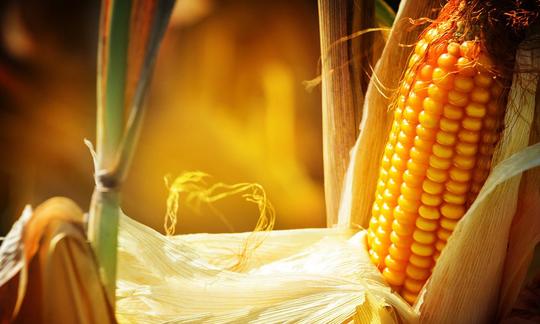

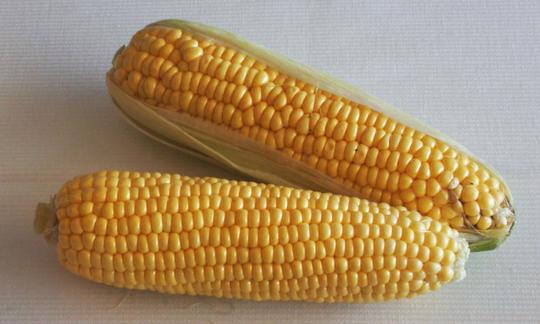

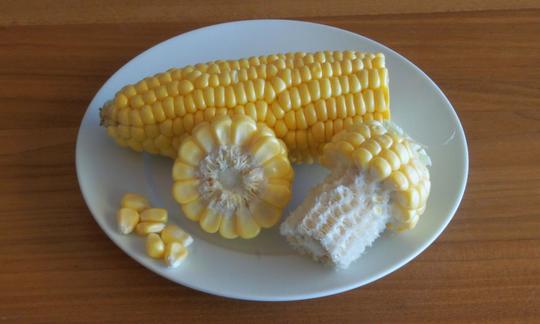

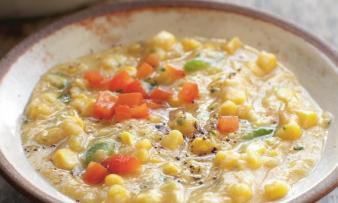
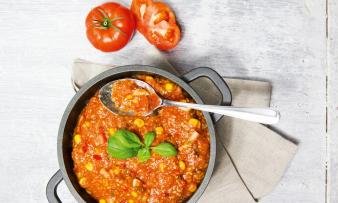
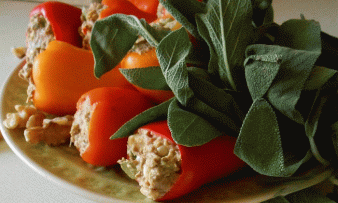
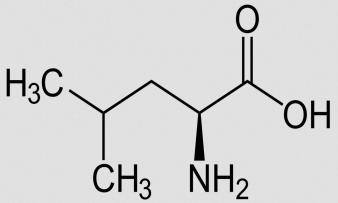

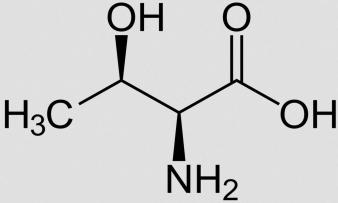


Comments